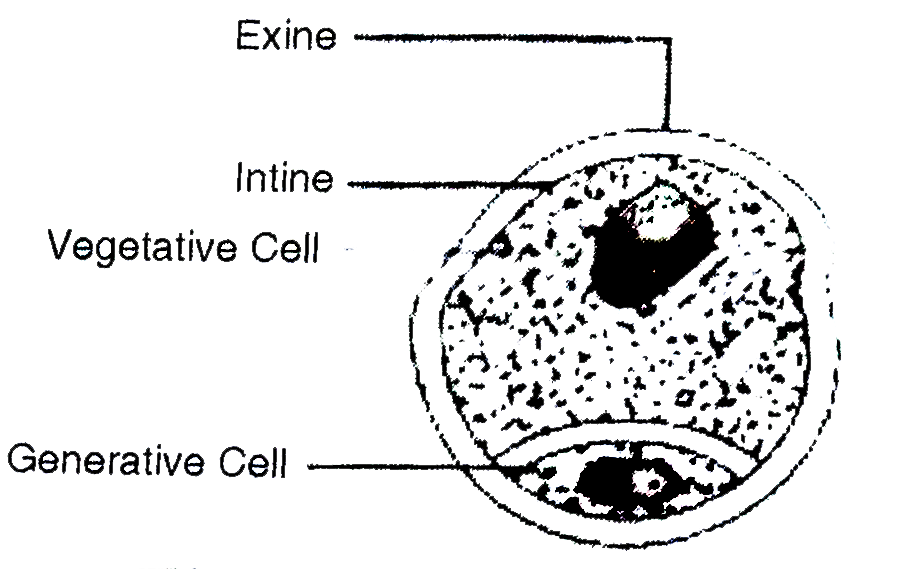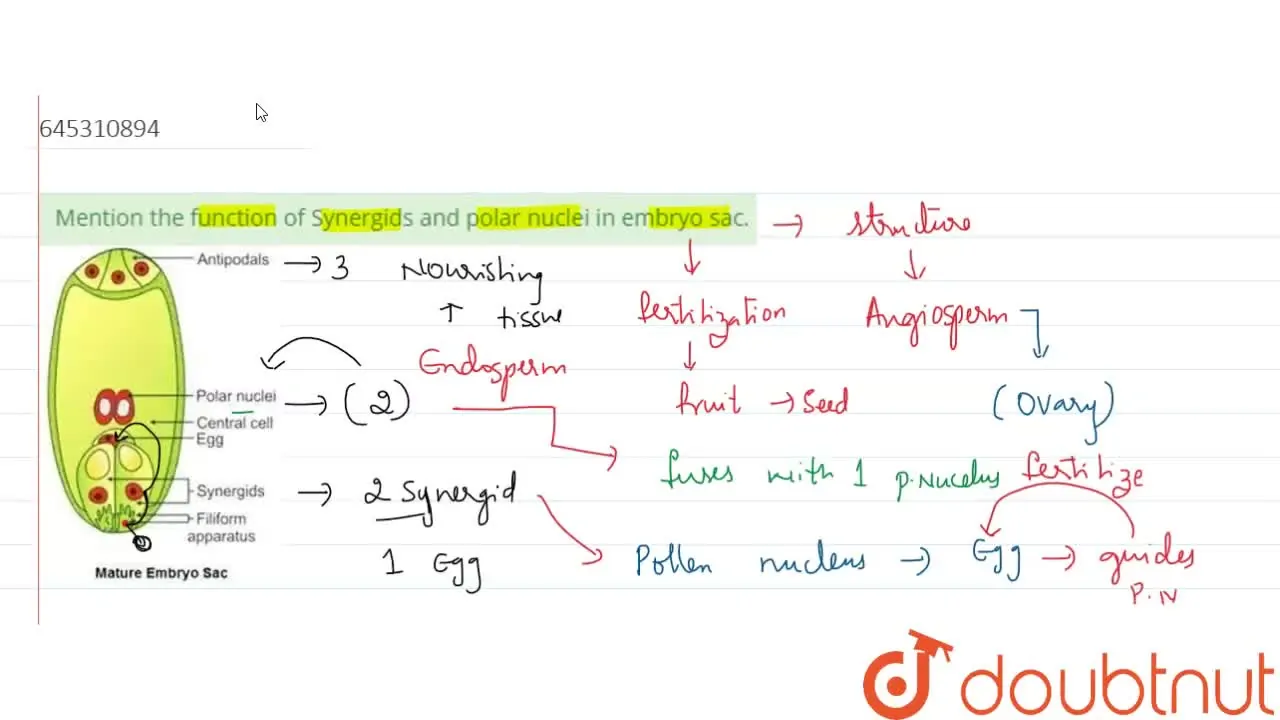Mention the function of Synergids and polar nuclei in embryo sac. Solution in Kannada

(b) Embryogeny in Dicots. In a typical dicot the zygote elongates and then divides by a transverse wall into two unequal cells. The larger basal cell is called suspensor cell. The other towards the antipodal end is termed as terminal cell or embryo cell. The suspensor cell divides transversely a few times to produce a filamentous suspensor of 6-10 cells. The suspensor helps In pushing the embryo in the endosperm. The first cell of the suspensor towards the micropylar end becomes swollen and functions as a haustorium. The haustorium has wall ingrowths similar to transfer cells. The last cell of the suspensor at the end adjacent to the embryo is known as hypophysis Hypophysis later gives rise to the radicle and root cap.
The embryo cell undergoes two vertical divisions (quadrant stage) and one transverse division to form eight cells arranged in two tiers (octant stage epibasal terminal and hypobasal (near the suspensor). The epibasal cells eventually form the two cotyledons and the plumule. The hypobasal cells produce the hypocotyl except its tip The eight embryonic cells or octants divide periclinally to produce an outer layer of protoderm or dermatogen. The inner cells differentiate further into procambium ( plerome) and ground meristem (= periblem. Protein forms epidermis, procambium gives rise to stele or vascular strand and ground meristem produces cortex and pith Initially the embryo is globular and undifferentiated. Early embryo with radial symmetry is called proembryo. It is transformed into embryo with the development of radicle, plumule and cotyledons. Two cotyledons differentiate from the sides with a faint plumule in the centre. At this time the embryo becomes heart-shaped. The rate of growth of the cotyledons is very high so that they elongate tremendously while the plumule remains as a small mound of undifferentiated tissue
Related Playlists
Similar Questions
Draw a labelled diagram of the sectional view of a mature pollen grain of angiosperms. Explain the function of generative cell and vegetative cell
 02:16View Solution
02:16View Solution[A] : Contractile vacuoles in protists show systole and diastole .
[R] : Contractile vacuoles help in osmoregulation .02:57View SolutionRegeneration was first discovered in Hydra by
02:53View SolutionSynergids of the polygonum type embryo sac are
01:39View SolutionSynergids provide nutrition to the embryo sac in Seam by
01:38View SolutionFusion of male gamete with polar nuclei of embryo sac is known as
01:36View SolutionThere are __________ polar nuclei in the embryo sac .
01:18View SolutionThe embryo sac has ________ nuclei .
02:06View SolutionHow many synergid cells are there in an mature embryo sac . Mention any two major role of synergids.
04:21View SolutionDraw diagram of embryo sac and label the following:
(i) Egg cell (ii) Polar Nuclei (iii) Synergids01:46View SolutionFusion of male gamate with polar nuclei in embryo sac is known as
02:58View SolutionIn a fertilised embryo sac, the haploid, diploid, and triploid sturcture are (A) Synergid, zygote and primary endosperm nucleus (B) Synergid, antipodal and polar nuclei (C) Antipodal, synergid and primary endosperm nucleus (D) Synergid, polar nuclei and zygote
03:56View SolutionFusion of male gamete with polar nuclei of embryo sac is known as :
05:02View SolutionHow many egg cell, synergid(s), antipodal cells and polar nulei are present in an embryo sac?
02:58View SolutionSynergids of the polygonum type of embryo sac
01:46View SolutionMention one significant function of the following: (i) Embryo sac (ii) Synergids
02:31View Solution


